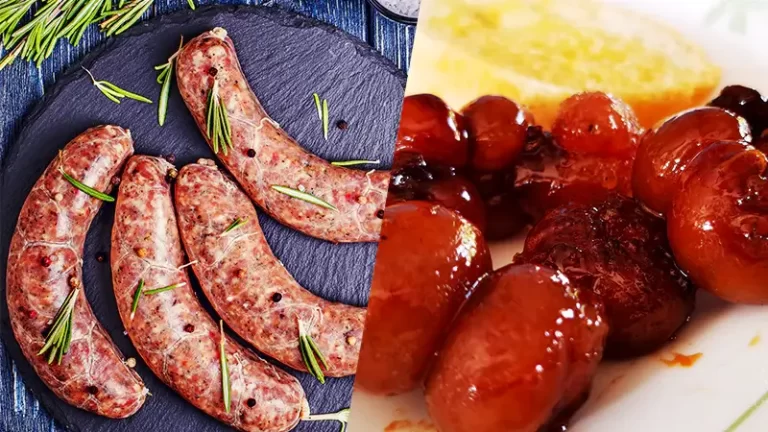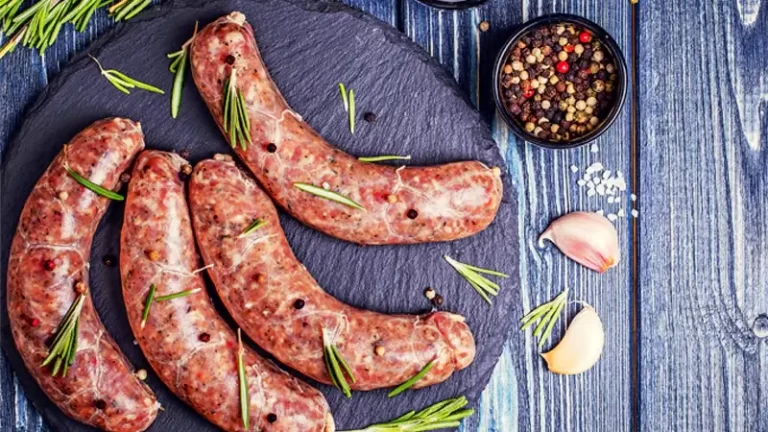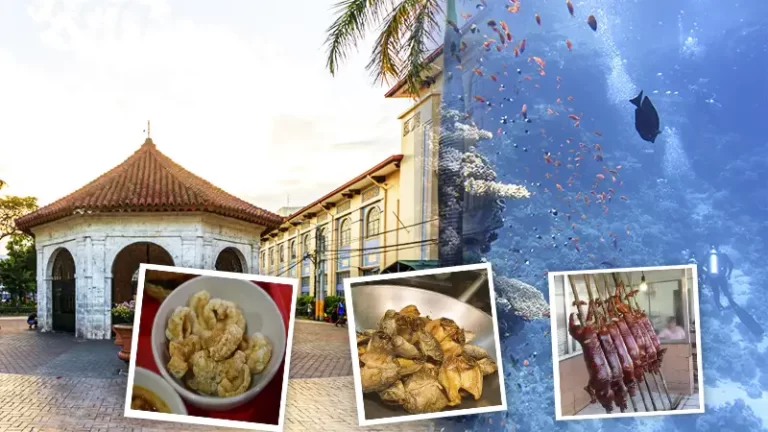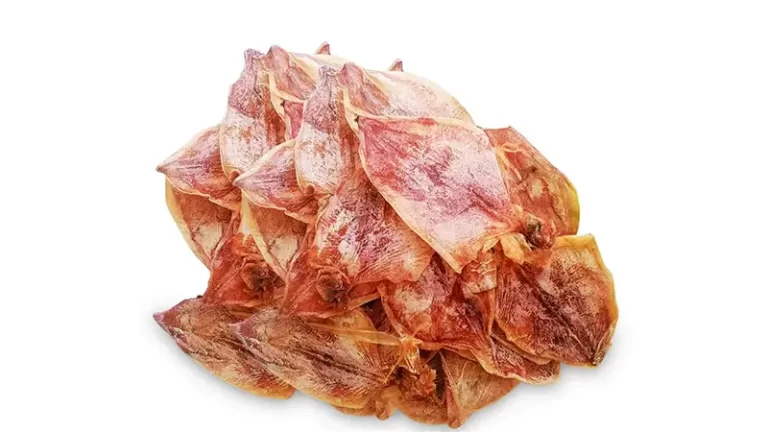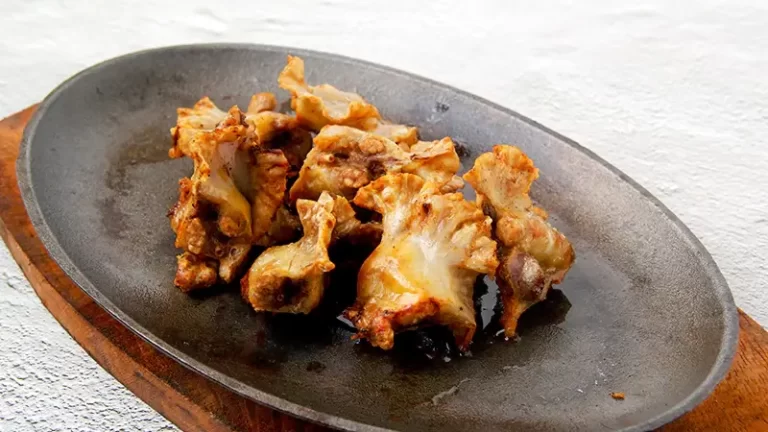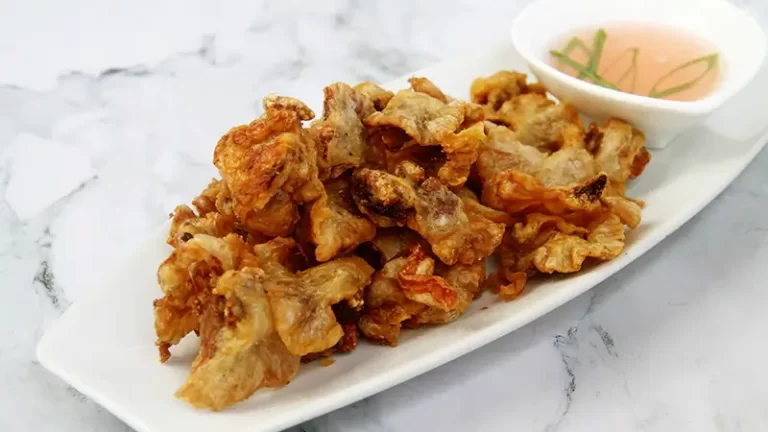Arguably, one of the most famous Philippine chorizos is Chorizo de Cebu.
Chorizo de Cebu comes in small balls of explosive flavor. These sausages are made with a delicious blend of flavors: sweet, smoky, savory, and spicy.
It’s one of those delicacies that are so simple, yet deliver such a complex array of tastes!
What is Chorizo de Cebu?
Chorizo de Cebu, also known as longganisa de Cebu, is a Filipino pork sausage originating from Cebu. It is a type of hamonada (sweet) longganisa.
They are distinctively red in color due to the use of achuete seeds. Each link is also usually spherical in shape.
Cebu chorizo is made from ground pork fat, ground lean pork, salt, sugar, saltpeter, anise liqueur (anisado), black pepper, paprika, garlic, and chilis to taste in a hog casing.
If you don’t already know, this sausage casing is made from the cleaned and processed intestines of animals (often pigs).
However, there is no leftover taste from the casing and in the end, you are left with flavorful balls of meat. It can also be made without the casing.
Chorizo Cebu is usually fried or grilled and eaten with white rice, puso, or garlic rice for breakfast.
Because of this, the beloved delicacy often makes its appearance in karenderyas and silogans, but also features in buffets, restaurants, hotels, and at home.
Aside from Chorizo de Cebu, Chorizo de Bilbao are quite popular too.
It’s a treat that Cebuanos – and Filipinos in general – of all ages enjoy!
Chorizo de Cebu Calories
According to MyNetDiary, 3 links of Chorizo de Cebu contains:
Serving Size: 3 links (113g)
Calories: 265
| % Daily Value | |
| Total Fat 16g | 21% |
| Saturated Fat 6g | 30% |
| Trans Fat 0g | |
| Cholesterol 67mg | 22% |
| Sodium 712mg | 31% |
| Total Carbs 11g | 4% |
| Dietary Fiber 0g | |
| Protein 18g | 36% |
| Vitamin A 0mcg | |
| Vitamin C 1mg | 1% |
| Calcium 20mg | 2% |
| Iron 0.9mg | 5% |
* The % Daily Value (DV) tells you how much a nutrient in a serving of food contributes to a daily diet. 2,000 calories a day is used for general nutrition advice.
How to Cook Chorizo de Cebu
Did you know that there are different ways you can cook Philippine chorizo?
- Broiling. Broiling chorizo in the oven is an easy way to expose it to high, direct heat while locking in its flavor.
- Pan Fry. If you want to slice, sear, or cook your Chorizo de Cebu like ground beef, the stovetop is your best bet.
- Grill. Grilling Chorizo de Cebu is a great way to get some fresh air while giving the chorizo a smoky flavor.
Learn more about the different ways you can cook Chorizo de Cebu here.
Delicious Chorizo De Cebu Recipes
Looking for delicious Chorizo de Cebu recipes? Here are some you can try!
- Chorizo de Cebu. Want to make your very own Chorizo de Cebu at home? Here’s a recipe for you.
Ingredients:
- 1 kg minced pork (25% fat)
- 3/4 cup brown sugar
- 1 tbsp salt
- 2 tsp ground black pepper
- 1 whole garlic, minced
- 2 tbsp anise liqueur (please see note on how to make it at home)
- 2 tbsp paprika
- 2 pcs birds eye chilies, finely chopped
- 2 tbsp pureed pineapple
- 3 tsp annatto powder
- 1/2 tsp carrageenan or red or white agar powder (substitute)
- Sausage casing
Instructions:
- In a large bowl mix together anise liqueur*, pureed pineapple, paprika, and annatto powder.
- Add in all the remaining ingredients then mix.
- Place mixture in a sausage stuffer, place casing on the other end then ties a tight knot on the end. Fill the sausage casing with the meat mixture, every 1 1/2-inch twist to seal the section, and gently pack each section until you are finished with all the meat.
- Once in the casing put it in the fridge for a day to dry, hold its shape and let it marinate on the spices. Place in the freezer for storage.
- To cook, place sausages in a pan, add a bit of water then cook on low heat while covered. Once the water dries out add a bit of oil then cook slowly until the sugar starts melting.
*To make anise liqueur just combine 50 g of star anise with 2 cups gin or plain vodka, 2 cups white sugar, and 2 cups water, and let it ferment for a couple of days before using.
If you are not that fussy, then you can also use 1/2 tsp of ground star anise for this recipe.
- Chorizo Fried Rice. Chorizo Fried Rice is a popular fried rice prepared with leftover cold rice, Cebu chorizo (or any chorizo in the Philippines), onion, eggs, carrot, garlic, soy sauce, spring onion, and salt.
Ingredients:
- 15 pieces of original flavor Chorizo de Cebu
- 5 cloves garlic (minced)
- 1 onion (diced)
- 1 medium-sized carrot (diced)
- 2 eggs
- Cold rice
- 1 teaspoon salt
- 2 tablespoon soy sauce
- 1 cup spring onion
Instructions:
- Prepare the wok on medium heat and add the oil. Saute the chorizo for 4-5 minutes.
- Add onions and cook for another minute. Add the garlic and sauté for a while. Place these on the side and add the eggs on one side. Once the egg has cooked mix them together and season with salt.
- Add the carrots and rice. Stir the rice continuously till everything has fully combined.
- Pour in the soy sauce and mix well. Add the spring onions and carefully stir till everything is combined.
- Cover the wok for a minute then serve immediately.
- Choripan. The choripan is a simple sandwich made with a long bread roll split to hold chorizos. This food’s name comes from the combination of the words: chorizo and pan (Spanish for bread).
Ingredients:
- 8 pcs chorizo de cebu cooked and skinned
- 4 pcs bread depends on your preference
- 4 tbsp garlic aioli
- 2 tbsp salted butter melted
For the salsa:
- 1 red onion cubed
- 2 cucumber cubed
- 1 tbsp cilantro leaves chopped
- 2 tbsp calamansi juice
- 1/4 cup red chili julienned
- 1/2 tsp fish sauce
Instructions:
- Assemble the salsa by combining the calamansi juice, fish sauce, cucumber, and red onion in a small bowl.
- Brush the crust of the pandesal with melted butter.
- Toast for 10 minutes in the Oster Oven using the Toast Function.
- Take the pandesal out of the oven and spread the aioli on both slices of the bread.
- Place 2 pieces of the skinned chorizos, a bunch of cilantro, a spoonful of the prepared salsa, and red chili on each bread sandwich.
- Serve hot and enjoy!
- Sauteed Potatoes with Chorizo. Love potatoes and Chorizo de Cebu? Enjoy the best of both worlds with this recipe!
Ingredients:
- 1 tablespoon vegetable oil
- 10 ounces Mexican pork chorizo, casings removed (see Cook’s Note)
- 1 small onion, diced
- 1 pound red-skinned new potatoes, cut into small (1/4-inch) dice, and boiled
- Kosher salt and fresh ground black pepper
Instructions:
- Heat the oil in a heavy large skillet over medium-high heat.
- Add the chorizo and cook, breaking up the clumps, until dry and crisp, about 10 minutes.
- Using a slotted spoon, transfer the chorizo to a paper-lined plate to absorb any additional oil.
- Pour off all but 1 tablespoon of fat from the pan and heat the pan over medium-high heat.
- Add the onions and boiled potatoes and saute until brown, about 12 minutes. Stir in the cooked Cebu chorizo and season with just a little salt and pepper, to taste.
- Transfer to a serving bowl and serve.
How Much Is Chorizo Philippines
You can buy Chorizo de Cebu for about ₱200 to ₱300 per kilogram.
Where to Buy Chorizo Cebu
Nowadays, you can get yourself a link of chorizos from many resellers online. Markets, meat shops, and the meat section in grocery stores also typically have regular and spicy chorizos.
The Bottom Line
Among the many types of Philippine chorizo, one of the most popular is Chorizo de Cebu. Made from ground pork fat, ground lean pork, salt, sugar, saltpeter, anise liqueur (anisado), black pepper, paprika, garlic, and chilis to taste in a hog casing, this beloved delicacy often makes its appearance in karenderyas and silogans, but also features in buffets, restaurants, hotels, and at home.
Want to know the difference between Chorizo de Cebu and Chorizo de Bilbao? Read our full article here.



